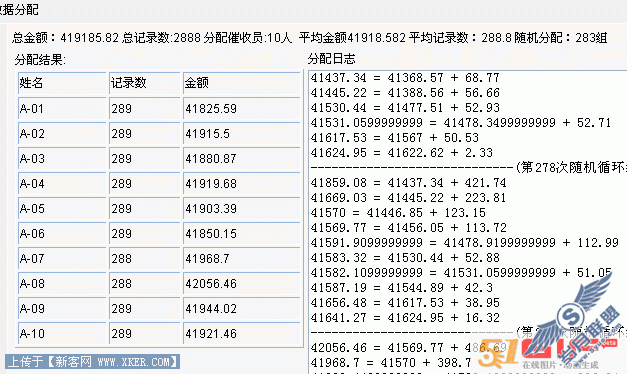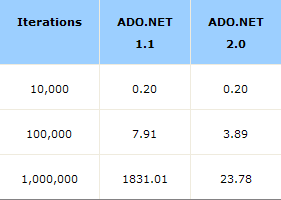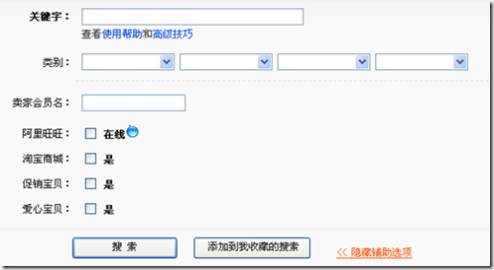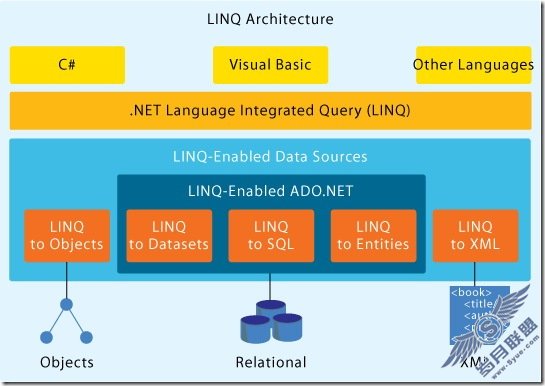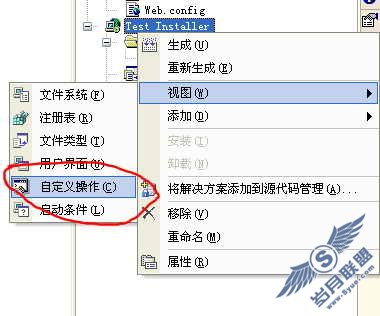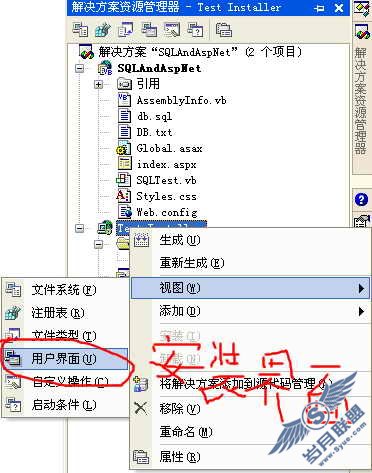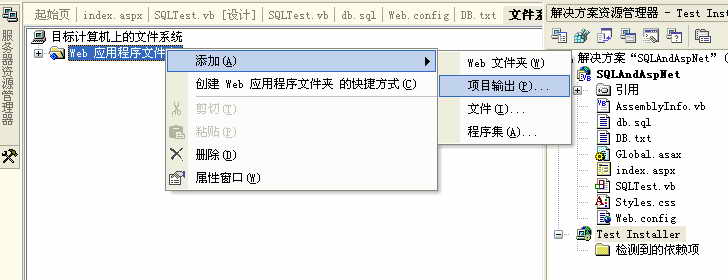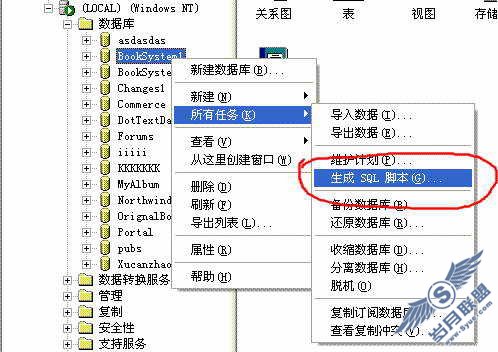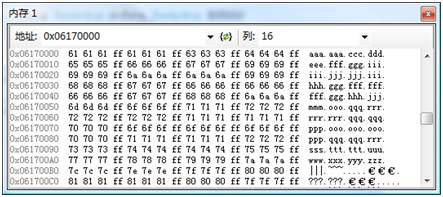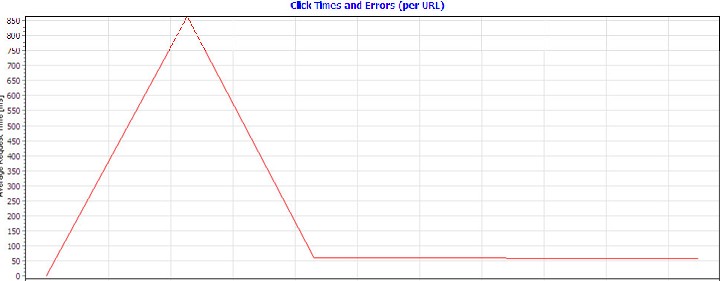Enterprise Library 快速入门
来源:岁月联盟
时间:2007-11-02
如果要理解一个应用程序块,快速入门将是理想的起始点,并且用试验源代码来学习新的技术也是非常舒服的。如果已对 .NET 框架比较熟悉,以及如果要查看简单的、有助于理解如何解决特定问题的代码示例的话,它们将是非常好的资源。
要使用快速入门的所有优点的话,将需要熟悉面向对象编程相关的概念和技术。
缓存快速入门
快速入门应用程序示范了缓存应用程序块的一些关键特性。它使用了一个漫游集合来示范这些特性。漫游是在“关键场景”中讨论的情况的实现,如下:
漫游:添加条目到缓存中
漫游:从缓存中移除条目
漫游:从缓存中获取条目
漫游:清除缓存
漫游:加载缓存
快速入门使用了一个顶层的处理程序来捕获任何场景中的任何异常。处理程序显示了一个带有异常信息的对话框。
系统需求
要构建并运行快速入门,你将需要下列软件:
Microsoft Windows 2000, Windows XP Professional, 或者 Windows Server 2003 操作系统
Microsoft .NET Framework 2.0
Microsoft Visual Studio 2005 开发系统
快速入门在构建和运行应用程序之前不需要执行任何安装步骤。
注意
默认的快速入门配置不使用持久后端存储。
构建并运行快速入门
快速入门以源代码的形式发布,这意味着在运行之前必须编译它,可以使用 Visual Studio 来构建快速入门。
构建缓存快速入门
确认 Enterprise Library 源代码已安装
从 Windows 资源管理器中打开 Enterprise Library 源码文件夹,或者用开始菜单快捷方式打开:在任务栏中,单击 开始 ,指向 程序 ,指向 Microsoft patterns and practices ,指向 Enterprise Library 3.1 – May 2007 ,然后选择 Enterprise Library 3.1 Source Folder 。
打开 QuickStarts 文件夹,然后是 Cache ,然后是 CS (用于 C#)或者 VB (用于 Visual Basic .NET)。
双击 CachingQuickStart.sln 图标。
Visual Studio 打开、显示解决方案文件。在菜单中,单击 生成 。
单击 重新生成解决方案 。默认情况下,这是一个 debug 构建。
按下 F5 运行快速入门。
快速入门配置
快速入门配置信息放置在快速入门项目的文件夹中,它具有下列属性:
用于缓存操作节的缓存管理器被命名为“Default Cache Manager”。用于主动和被动加载缓存的节的缓存管理器被命名为“Loading Scenario Cache Manager”。
数据仅写在内存中(而不是后端存储)。
每 60 秒发生一次到期周期。
在缓存中有 1000 个条目时发生清理。
从缓存中清理移除 10 个条目。
快速入门中的漫游带有定义好的配置,它被包括在 App.config 文件中。这个文件放置在快速入门项目文件的文件夹中。
要修改或查看这些设置,使用 Enterprise Library 配置控制台打开包含快速入门项目文件目录中的 App.config 文件。App.config 包含了配置数据。
在每次构建代码时,Visual Studio 复制 App.config 文件到项目的输出目录中(创建的快速入门可执行文件的目录),并改名为 CachingQuickStart.exe.config 。
这意味着如果要使用配置控制台修改任何配置设置,如到期周期,并且计划重建解决方案,就必须打开快速入门源目录中的 App.config 文件来修改配置。可以用配置控制台打开 CachingQuickStart.exe.config 文件。然而,这些改变将在下次成功构建中被覆盖。
这意味着当使用配置控制台打开 App.config 文件并修改配置设置时,必须复制文件到输出目录。可以手工复制,也可以重建项目来完成此目的。记住,简单的修改配置设置没有必要重建代码。运行在成功构建之上的命令是为了方便构建。
漫游:添加条目到缓存
此漫游示范了如何添加条目到缓存中。
重建示例
配置缓存。必要的步骤,请参见输入配置信息。
在 QuickStartForm 类中为 CacheManager 对象声明一个成员变量。
例 7.21. C#
private CacheManager primitivesCache;
例 7.22. Visual Basic .NET
Private primitivesCache As CacheManager
在 QuickStart_Load 方法中,添加下列代码以创建 CacheManager 。对 GetCacheManager 的调用没有包含CacheManager 的名称,所以工厂创建了声明在配置文件中的默认 CacheManager 对象。
例 7.23. C#
this.primitivesCache = CacheFactory.GetCacheManager();
例 7.24. Visual Basic .NET
Me.primitivesCache = CacheFactory.GetCacheManager()
创建要添加到缓存中的条目。下列代码创建了一个 Product 类型的条目。
例 7.25. C#
string id="ProductOneId";
string name = "ProductOneName";
int price = 50;
Product product = new Product(id, name, price);
例 7.26. Visual Basic .NET
Dim id As String = "ProductOneId"
Dim name As String = "ProductOneName"
Dim price As Integer = 50
Dim newProduct As Product = New Product(id, name, price)
添加条目到缓存中。下列代码使用了 Add 方法的一个重载,重载包含清理优先级(在此为2),条目在到期时不刷新的指令、从条目的最后访问时间开始的5分钟的到期时间。
例 7.27. C#
primitivesCache.Add(product.ProductID, product, CacheItemPriority.Normal, null,
new SlidingTime(TimeSpan.FromMinutes(5)));
例 7.28. Visual Basic .NET
primitivesCache.Add(newProduct.ProductID, newProduct, CacheItemPriority.Normal, Nothing, _
New SlidingTime(TimeSpan.FromMinutes(5)))
漫游:从缓存中移除条目
此漫游示范了如何从缓存中移除条目。
重建此示例
配置缓存。必要的步骤,请参见缓存快速入门中的“快速入门配置”。
在 QuickStartForm 类中为 CacheManager 对象声明一个成员变量。
例 7.29. C#
private CacheManager primitivesCache;
例 7.30. Visual Basic .NET
Private primitivesCache As CacheManager
在响应用户请求从缓存中移除条目的方法中,添加下列代码。
例 7.31. C#
// Prompt the user for the key of the item to be removed.
if (this.selectItemForm.ShowDialog() == DialogResult.OK)
{
// Request that the item be removed from the cache.
this.primitivesCache.Remove(selectItemForm.ItemKey);
}
例 7.32. Visual Basic .NET
' Prompt the user for the key of the item to be removed.
If (Me.selectItemForm.ShowDialog() = DialogResult.OK) Then
' Request that the item be removed from the cache.
Me.primitivesCache.Remove(selectItemForm.ItemKey)
End If
漫游:从缓存中获取条目
此漫游示范了如何从缓存中获取条目。
重建示例
配置缓存。必要步骤,请参见缓存快速入门中的“快速入门配置”。
在 QuickStartForm 类中为 CacheManager 对象声明一个成员变量。
例 7.33. C#
private CacheManager primitivesCache;
例 7.34. Visual Basic .NET
Private primitivesCache As CacheManager
在响应用户请求从缓存中读取条目的方法中,添加下列代码。
例 7.35. C#
// Prompt the user for the key of the item to be read.
if (this.selectItemForm.ShowDialog() == DialogResult.OK)
{
// Read the item from the cache. If the item is not found in the cache, the
// return value will be null.
Product product = (Product) this.primitivesCache.GetData(selectItemForm.ItemKey);
}
例 7.36. Visual Basic .NET
' Prompt the user for the key of the item to be read.
If (Me.selectItemForm.ShowDialog() = DialogResult.OK) Then
' Read the item from the cache. If the item is not found in the cache, the
' return value will be null.
Dim requestedProduct As Product = DirectCast(Me.primitivesCache.GetData(selectItemForm.ItemKey), Product)
End If
漫游:清除缓存
此漫游示范了如何清除缓存,清空缓存中的所有数据。
重建此示例
配置缓存。必要步骤,请参见缓存快速入门中的“快速入门配置”。
在 QuickStartForm 类中为 CacheManager 对象声明一个成员变量。
例 7.37. C#
private CacheManager primitivesCache;
例 7.38. Visual Basic .NET
Private primitivesCache As CacheManager
在响应用户请求清空缓存的方法中,添加下列代码。
例 7.39. C#
this.primitivesCache.Flush();
例 7.40. Visual Basic .NET
Me.primitivesCache.Flush()
